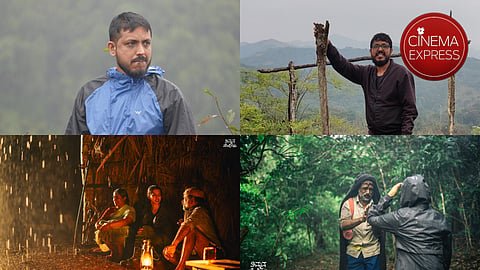

If forests could talk, probably Rakshith Thirthahalli would be their translator. The director, best known for his socially conscious films like Hombanna, which examined forest encroachment, and Yentha Katha Maaraya, centred on the diversion of the Sharavathi River to Bengaluru, now returns with what he calls his most personal and environmentally charged work yet: Timmanna Mottegalu. Scheduled to release in theatres on June 27, the film is both written and directed by Rakshith and produced under the banner of Shree Krishna Productions, with Adarsha Iyengar making his debut as producer.
This time, the filmmaker is set to take audiences deep into the Western Ghats, exploring not just the geography of the region but the intricate emotional and ecological relationships that exist within it. In this film, the forest is not merely a backdrop; it is about the unsettling rhythm of an ecological imbalance. According to Rakshith, Timmanna Mottegalu is a cinema meditation on the human-animal connection, generational vulnerability, and the silent devastation caused by human interference with nature.
“This is a very personal story for me. It’s about emotional intimacy, yes—but also about territory. Not just land, but instinct and survival. At the heart of the story is the King Cobra, a symbol that serves both literal and metaphorical purposes throughout the narrative. The film, shot entirely in the Western Ghats, follows a rural family’s interactions with increasing sightings of serpents, especially of King Cobras, local belief systems, and the uneasy coexistence between humans and beasts.
In Malnad, as Rakshith explains, the King Cobra is not feared but revered. “People worship it,” he says. “That belief has protected forests. While scientists approach snakes through the lens of conservation and ecology, locals see them as divine. I wanted to bring that duality into the story.”
Though born in the Malnad region, Rakshith grew up in Bayalu Seeme, the dry plains of Karnataka, where his creative instincts took shape. As a teenager, he often trekked into the forests, observing the changing light and air. “That emotional shift between the outside world and the forest’s womb— stayed with me. Much of this is found in my book Kaadina Nentaru, from which the story of Timmanna Mottegalu is adapted.
Visually, the film is elevated by cinematography from Praveen S, editing by Kemparaju BS, and a stirring musical score composed by Hemanth Jois. Rakshith notes that the film’s making was anything but mechanical. “This wasn’t made in a rush. We walked the land. We breathed it. The whole crew understood that we were stepping into something sacred.”
As for what comes next, Rakshith hints that his forthcoming project will be a woman-centric story, though he’s not ready to reveal more. “Let this one speak first. Then I’ll tell another story," he signs off.
The film was sparked by Rakshith’s growing concern over ecological imbalance. A noticeable rise in King Cobra sightings, coupled with the disappearance of rat snakes—their primary prey—set off a chain of inquiry. "It’s not about snakes being dangerous; it’s about imbalance. And that imbalance is something we’ve caused,” says Rakshith, who also points out that the rising population of peacocks in the Western Ghats and even in urban regions like Bengaluru is part of a larger shift in environmental dynamics. Rakshith mentioned that these themes are not presented didactically but are carefully woven into a family drama where the forest and the snake become emotionally resonant characters.
“The forest should remain the forest,” he says with quiet conviction. “But the moment humans step in, it begins to erase itself. Landslides, droughts, disappearing species—it’s all tied to our footsteps.”
To portray the role of a seasoned snake rescuer, Rakshith drew inspiration from real-life herpetologist Gowri Shankar. He wanted someone who could carry the gravity of lived experience without resorting to theatricality. Actor Suchendra Prasad, with whom Rakshith had previously worked in Hombanna, fit the role effortlessly. “He carried the silence of the forest in his eyes,” says the director.
The film also features Ashika Somshekar, Keshav Guttalike, Shringeri Ramanna, Pragati Prabhu, Raghu Ramankoppa, Master Harsha, Vinay Kanive, and Prithviraj Koppa in pivotal roles.
Before its domestic release, Timmanna Mottegalu premiered in Dallas, Texas, where it received an unexpectedly emotional response from audiences. “The feedback was humbling,” Rakshith shares. “People said it reminded them of Tabarana Kathe and Paniyamma. For a regional indie rooted in rural Karnataka to connect with people so far from home—it meant everything.”
The film was also screened at the Dadasaheb Phalke Film Festival, where it won the Special Jury Mention Award. “For years, people told me, ‘Don’t bring snakes into a drama. It’s too niche.’ But the niche is beautiful if it’s honest,” Rakshith says.